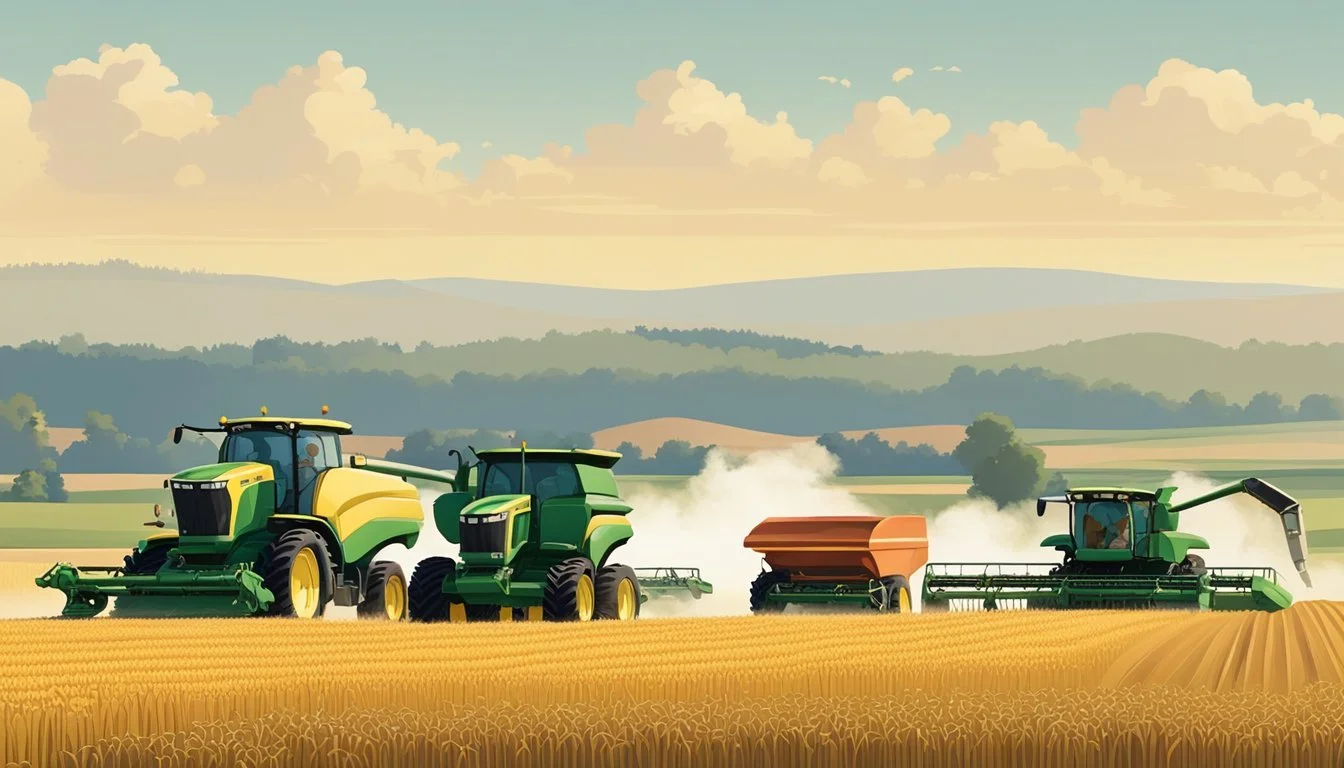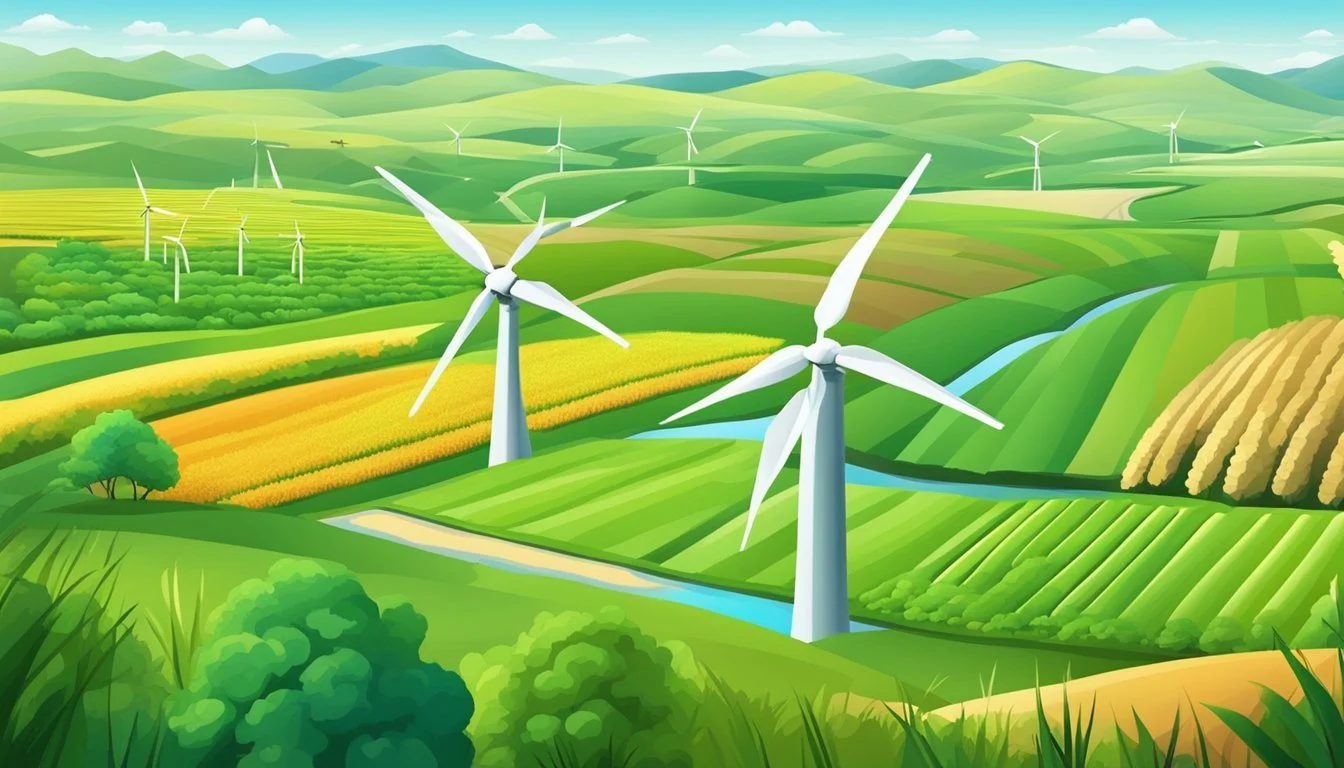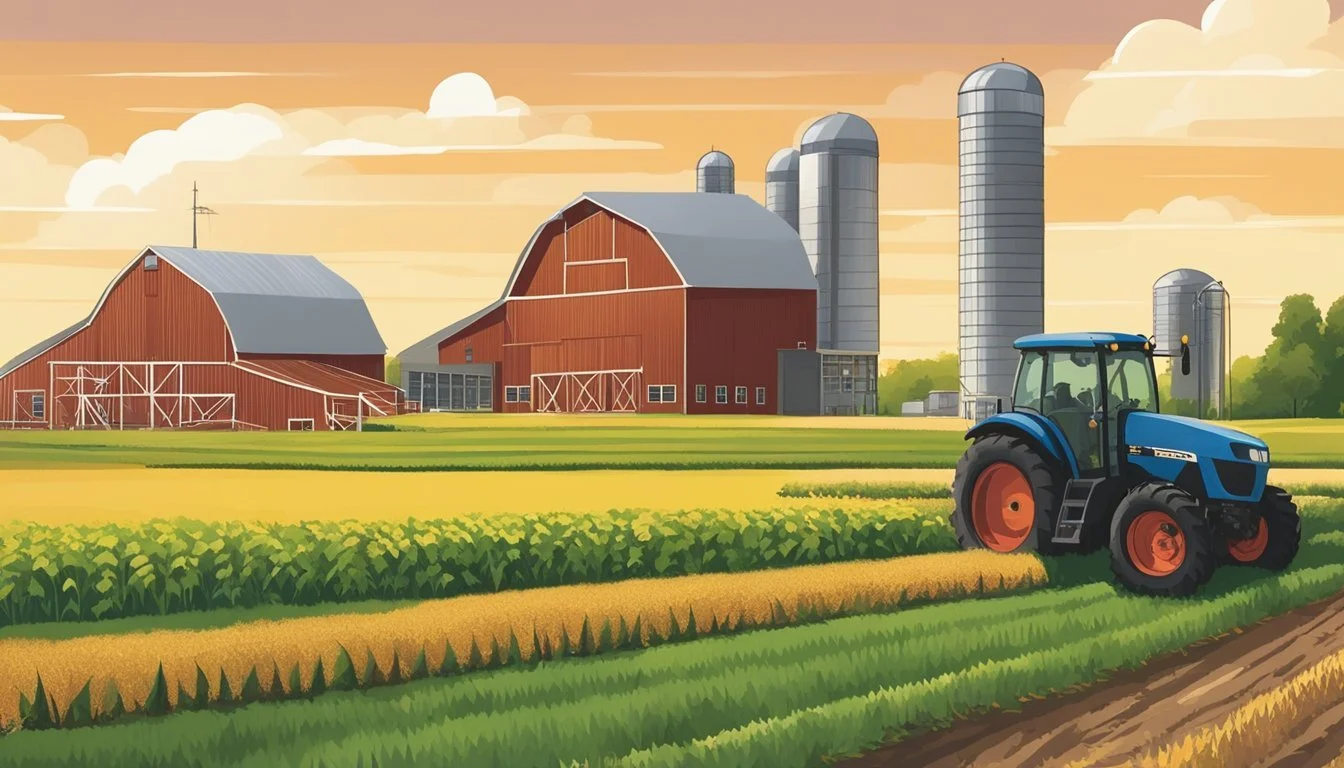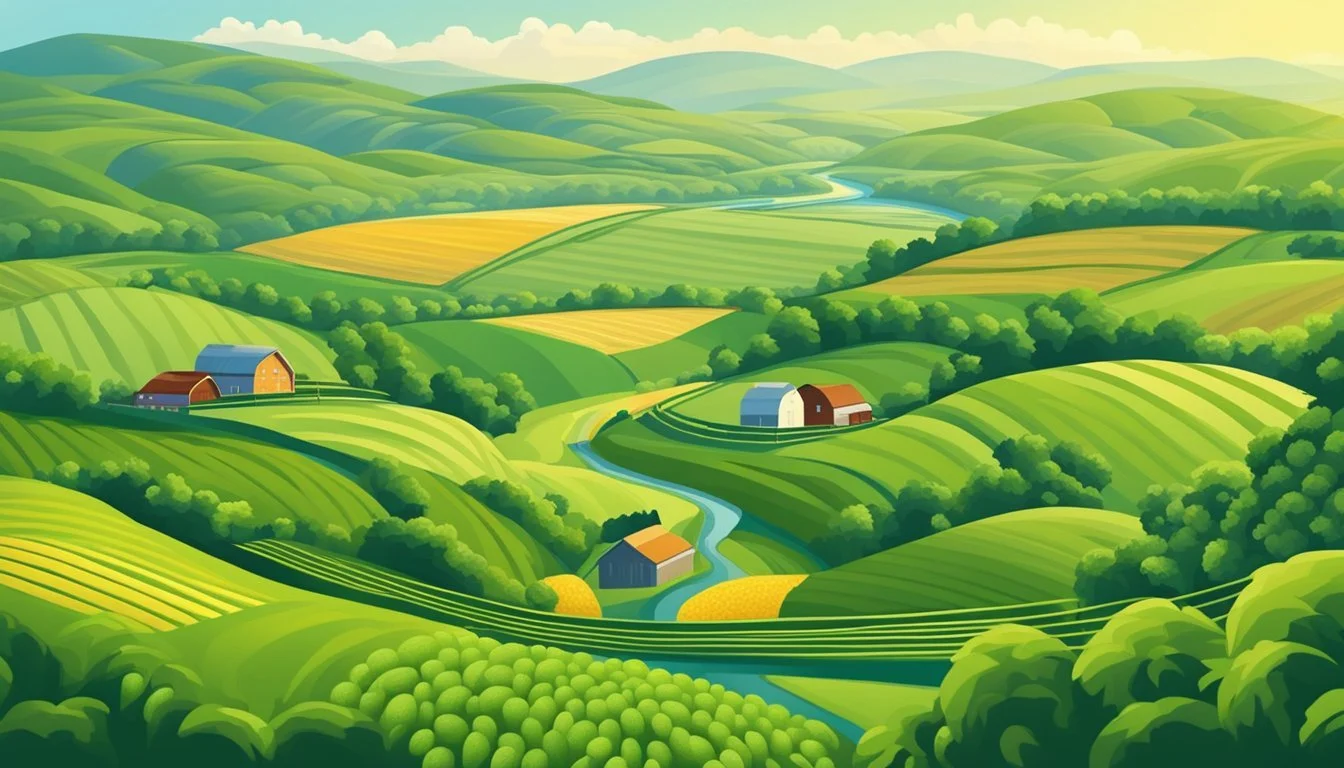Farming Communities in Indiana
Growth, Challenges, and Innovations
Indiana's farming communities are the backbone of the state's agricultural prowess, offering a vibrant tapestry of rural life and agricultural innovation. Among these communities, two Indiana couples, Paige and Jordan Gillenwater and Rachael and Kyle Harvey, exemplify dedication to local agriculture by supporting local farmers and ensuring their neighbors have access to fresh, locally produced food. Their efforts highlight the communal spirit that defines Indiana's agricultural communities.
Historically rich small towns, such as Orleans and Marengo, showcase a blend of tradition and modernity within Indiana. Orleans, named after the Battle of New Orleans, retains a deep historical identity while engaging in contemporary agricultural practices. Similarly, Marengo presents as a charming town enveloped in the advancements that keep Indiana at the forefront of productive farming despite the reduction of nearly 350,000 acres of farmland in recent years.
Amidst the challenges, Indiana continues to innovate. With the support from grants like the $5.2 million invested by the USDA, initiatives such as the Good for Youth Urban Farm are improving food production and accessibility in economically distressed communities. These efforts not only provide job training and education but also strengthen the critical link between urban development and agricultural sustainability.
History of Farming in Indiana
Indiana's agricultural history is rich with development and significant contributions to the state economy. The state's journey from early settlements to its current status in agricultural production is marked by key transitions and innovations.
Settlement and Development of Rural Communities
In the early 19th century, Indiana's rural communities began forming as settlers moved westward. Families like the Mitchells established farms that provided sustenance and economic stability. Communities were tightly-knit, with farming operations involving extensive manual labor.
The establishment of the Indiana State Fair in the late 1800s further galvanized these communities. Events such as the State Pioneer Convention in 1878 highlighted advancements and cultural heritages, fostering a strong sense of community among farmers.
Agriculture's Role in the State Economy
By the early 20th century, Indiana was predominantly an agricultural state. In 1925, 86.3% of the state's land was dedicated to farming, with over 195,000 farms in operation. Farming not only supported families but also contributed significantly to the local and state economy.
As of 2008, agriculture had a monumental impact, adding $25 billion to Indiana's economy. Key products like corn, soybeans, hogs, dairy, and eggs accounted for nearly $8 billion in cash receipts. Indiana remains a national leader, ranking 10th in overall agricultural production.
Indiana's Climatic and Geographic Impact on Farming
Indiana's farming communities are influenced significantly by the state's climate and geographic characteristics. These factors play crucial roles in determining soil health, crop selection, and water management strategies.
Soil Health and Crop Selection
Indiana's fertile soil is a significant asset for its farming communities. Black prairie soils, rich in organic matter, promote high crop yields.
Crop rotation is commonly practiced to maintain soil fertility. This method helps in breaking pest cycles and improving soil structure.
Indiana's climate, featuring moderate temperatures and precipitation, supports a diverse range of crops. Corn and soybeans dominate the cropland, but farmers also grow wheat, hay, and specialty crops like melons.
Understanding soil nutrient levels and pH balance is essential for optimizing crop selection. Soil testing guides farmers in amending soils to enhance crop performance.
Water Management and Irrigation
Water availability and management are critical in Indiana's farming operations. The region experiences variable precipitation, necessitating efficient irrigation systems.
Surface irrigation is a typical method, benefiting from the state's natural waterways. In drier periods, subsurface drip irrigation is employed to conserve water while maintaining soil moisture levels.
Farmers implement sustainable water management practices to mitigate the impacts of climate change. This includes rainwater harvesting and the use of drought-resistant crop varieties.
Proactive measures ensure that water resources are used efficiently, reducing the risk of waterlogging and soil erosion. These strategies are integral to supporting long-term agricultural sustainability in Indiana.
Types of Farming Operations in Indiana
Indiana's farming landscape encompasses various operations, extensively engaging in cereal and grain cultivation, livestock production, and specialty crops. This diversity reflects the state's commitment to agricultural sustainability and economic contribution.
Cereal and Grain Farms
Cereal and grain farming forms a cornerstone of Indiana's agriculture. Corn and soybeans are predominant crops. Indiana ranks among the top producers in the nation for both, benefiting from fertile soils and favorable climate conditions.
Approximately 14.6 million acres are dedicated to farming, with a substantial portion allocated to these crops. Corn, often used for ethanol production, animal feed, and food products, is integral to the state's economy. Soybeans, another key crop, serve multiple purposes, including oil production and livestock feed. Wheat and other small grains also contribute to the agricultural output, although to a lesser extent.
Livestock Production
Livestock farming is another crucial aspect of Indiana's agricultural profile. The state is a leading producer of hogs and turkeys, supporting a robust meat processing industry. Family-owned farms dominate this sector, adhering to high animal welfare and environmental standards.
Hog production is particularly significant, with numerous farms specializing in raising pigs for meat. Indiana also stands out in poultry farming, especially turkey production, contributing to both domestic consumption and export markets. Cattle, dairy farms, and smaller operations involving sheep and goats add to the diversity of livestock farming in the state.
Specialty Crop Cultivation
Indiana diversifies its farming operations with a variety of specialty crops. These include tomatoes, hemp, and pumpkins, which are crucial for local consumption and commercial distribution.
Tomato farming is substantial in Indiana, providing for both fresh market sales and processing. The state has also embraced hemp cultivation, capitalizing on growing demand for CBD products and industrial applications. Furthermore, pumpkins are a significant seasonal crop, contributing to agritourism and local economies. This diversification helps stabilize income for farmers and support the state's agricultural resilience.
Sustainable Agriculture and Conservation Efforts
Indiana's farming communities have embraced various sustainable practices to improve soil health and preserve the environment. Key initiatives include the adoption of conservation programs and advancements in crop rotation techniques.
Implementation of Conservation Programs
Indiana farmers benefit from several conservation programs that promote sustainable practices. Notable initiatives include the Conservation Reserve Program (CRP), which provides financial assistance to farmers for removing environmentally sensitive land from production. This program has preserved over 1 million acres in Indiana, enhancing habitats for wildlife.
The use of no-till farming and cover crops is on the rise. For instance, over 1.6 million acres were planted with cover crops and winter wheat in 2023. These practices help reduce soil erosion and improve soil health, making farming more sustainable.
Advancements in Sustainable Crop Rotation
Crop rotation is crucial for maintaining soil fertility and reducing pest and disease cycles. Indiana farmers frequently alternate between corn and soybeans, among other crops, to maintain soil productivity. This method not only enriches the soil but also improves yields.
Innovations in crop rotation also involve integrating cover crops during off-seasons. By doing so, farmers protect and enrich the soil when primary crops are not being grown. These advancements underscore the commitment of Indiana farming communities to sustainable agriculture.
Agricultural Education and Support Institutions
Indiana's farming community is supported extensively through various agricultural education initiatives and support institutions. These institutions provide essential services, training, and resources to ensure agricultural success and sustainability in the state.
Role of Purdue Extension
Purdue Extension plays a significant role in supporting Indiana's agricultural education. They offer programs covering a range of topics, from crop management to livestock care.
The Extension provides research-based information, helping farmers make informed decisions. They conduct workshops, field days, and provide resources aimed at increasing productivity and sustainability. Furthermore, Purdue Extension collaborates with local schools to integrate agricultural education into their curriculum, fostering early interest and expertise in farming careers.
Services by Indiana State Department of Agriculture
The Indiana State Department of Agriculture (ISDA) is another critical support pillar for the state's farming communities.
They offer grants and financial assistance programs, such as the Indiana Ag Scholarships & Grants to support youth and current farmers. The ISDA focuses on increasing farm viability and sustainability through various initiatives, including urban agriculture and innovative production programs.
Moreover, ISDA provides technical assistance, regulatory guidance, and market development services. These efforts aim to bolster the economic strength and technological capabilities of Indiana's farmers, ensuring long-term growth and sustainability in the agricultural sector.
Challenges Facing Indiana Farmers
Indiana farmers face significant hurdles, including the constant battle against pests and diseases, and adjusting to the unpredictable impacts of climate change. These challenges require innovative solutions and dedicated efforts to ensure sustainable agricultural practices.
Pest and Disease Management
Insect pests, such as corn rootworms and soybean aphids, contribute to crop damage, requiring effective control measures. Farmers often rely on integrated pest management (IPM) strategies that include biological controls, chemical treatments, and crop rotation. These methods help mitigate the impact, yet they can be cost-intensive and labor-demanding.
Diseases also pose a threat to crops, particularly fungal diseases like Fusarium wilt in tomatoes. Advanced disease management techniques involve the use of resistant crop varieties and careful monitoring of growing conditions. Adopting technology such as drones and sensors can assist in early detection and targeted intervention.
Despite these efforts, pests and diseases remain a persistent issue. Combating them efficiently involves a combination of traditional and modern agricultural practices, continuous research, and community education.
Impact of Climate Change on Farming
Climate change has a profound effect on farming conditions in Indiana. Increased temperatures and unpredictable weather patterns lead to altered growing seasons, affecting crop yields and farming schedules. Torrential rains and flooding can ruin crops, while droughts stress water resources, making irrigation more challenging.
Farmers must adopt climate-resilient practices, such as drought-tolerant crop varieties and water conservation techniques. Cover cropping and no-till farming help improve soil health and reduce erosion, providing some buffer against extreme weather conditions.
Fire risks due to scorching summer temperatures necessitate fire management strategies to protect farmlands. Preventive measures and emergency plans are critical to safeguarding crops and infrastructure from fire damage.
The fluctuating climate requires farmers to be adaptable and resourceful. Innovation, coupled with strong support from agricultural institutions and policymakers, is essential to address these evolving challenges.
Indiana's Agricultural Economy and Markets
Indiana's agriculture is both a significant part of the state's economy and a vital player in national and international markets. The state's strategic goals and market values highlight its pivotal role in farming and agribusiness.
The State as an Agricultural Exporter
Indiana ranks as a major agricultural exporter in the United States. According to the USDA, the state exported a substantial variety of commodities, including corn, soybeans, and pork. These exports contribute heavily to the state's economy, especially given Indiana's vast agricultural land spanning over 14.6 million acres. Corn and soybeans are particularly vital, representing a significant portion of the export market.
The state's hardwood industry also holds considerable economic weight, generating over $10 billion annually. Indiana's exports are supported by advanced infrastructure and strategic planning aimed at improving the agricultural sector's competitiveness. With 53,300 farms, the majority being family-owned, Indiana maintains robust agricultural production which supports local and global markets.
Local and National Market Trends
The value of unprocessed agricultural commodities sold in Indiana reached $18 billion in 2022. This figure reflects the state's critical role not only as a local supplier but also as part of a national strategy to secure food resources. Indiana is the ninth-largest farming state in the nation and continues to hold significant market share.
Market trends indicate a marginal increase in farm size, with the average farm now covering 274 acres. Additionally, 94% of the farms are family-operated, ensuring that agricultural practices and profits benefit local communities. Technological advancements and strategic initiatives are continuously implemented to improve yield and efficiency, aligning with national agricultural goals set forth by the USDA and other governing bodies.
Natural Resources and Indiana's Farming
Indiana's farming communities benefit greatly from the state's natural resources, especially its forests and diverse wildlife. Programs and efforts from organizations like the Indiana Department of Natural Resources (DNR) support sustainable practices.
Forests and Woodlands
Indiana's forests play a crucial role in the farming landscape. These woodlands help maintain soil health and water quality. Many farms incorporate forest management practices to enhance productivity. The Indiana DNR collaborates with farmers to implement these practices, providing technical and financial support.
Beef farming often integrates forested areas as grazing land, promoting sustainable land use. Bees also benefit from forest ecosystems, supporting pollination and biodiversity. Such practices ensure a balanced and productive farming environment.
Wildlife and Biodiversity Conservation
Wildlife conservation is integral to Indiana's farming ecosystem. Biodiversity is supported through various conservation programs that create habitats for native species. The Natural Resources Conservation Service (NRCS) offers assistance to farmers for wildlife-friendly practices.
Pollinators like bees are vital for crop production and biodiversity. By fostering habitats that support a wide range of species, Indiana's farms enhance ecological stability. Such conservation efforts, backed by state and federal entities, play a significant role in sustaining the ecosystem.
Farming Community Profiles
Indiana's farming communities vary from historical African-American settlements to diversified agricultural hubs. These communities illustrate the state's deep agricultural roots and adaptability to changes over time.
Sullivan County: An Agricultural Snapshot
Sullivan County stands out with its agricultural significance in Indiana. Known for its corn and soybean production, the county contributes meaningfully to the state's economy.
In 2022, Indiana's agriculture as a whole was valued at $35.1 billion, with Sullivan County playing its part.
Farming practices in the county have evolved, embracing new technologies while maintaining traditional methods. The region's farms are often family-owned, with land passed down through generations, ensuring continuity and sustainability.
Community activities in Sullivan County support local farmers through cooperatives and agricultural events, fostering a tight-knit rural populace. Even with the rise of suburban migration, efforts remain strong to keep these communities vibrant and productive.






